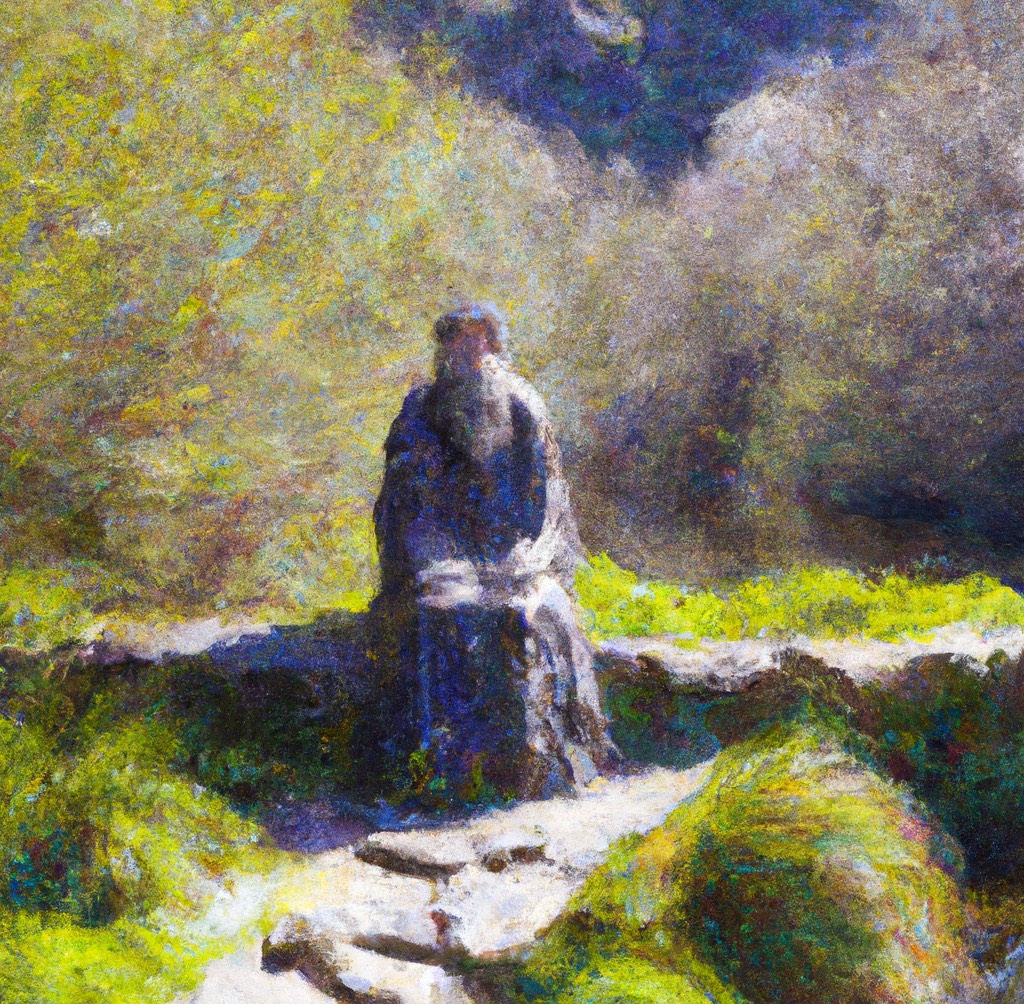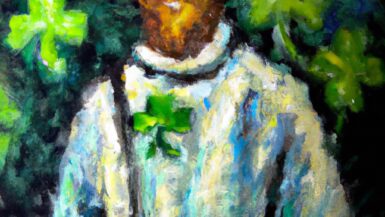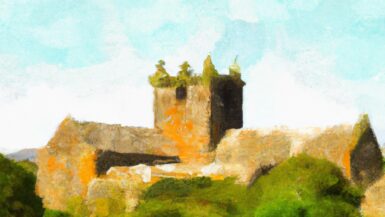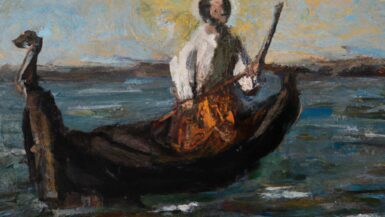St. Kevin of Glendalough, known in Irish as Caoimhín, is one of the most enigmatic figures in Irish Christian history. Known for his hermit lifestyle, miraculous deeds, and a legendary encounter with a blackbird, St. Kevin’s life and legacy are deeply intertwined with the natural beauty of the Wicklow Mountains. This article explores the remarkable life of this Irish saint.
Early Life and Spiritual Calling
St. Kevin was born in 498 AD into the royal lineage of Leinster, one of Ireland’s ancient kingdoms. Despite his noble birth, Kevin felt a strong spiritual calling from an early age. Under the guidance of three holy men – Eoghan, Lochan, and Eanna – Kevin was educated and nurtured in Christian faith.
Journey to Glendalough
Drawn to the ascetic life, Kevin relinquished his worldly possessions and embarked on a journey of spiritual discovery. His journey led him to the beautiful valley of Glendalough, known for its two serene lakes surrounded by lush mountains. Here, Kevin chose to live in solitude, embracing the life of a hermit.
Hermitage and Connection with Nature
In Glendalough, Kevin lived in a cave known as ‘St. Kevin’s Bed,’ which was more of a man-made cave carved into the side of the mountain overlooking the upper lake. Here, he would spend his days in prayer and contemplation, living off the land, and immersing himself in the harmony of nature. It was said that Kevin had a unique bond with the animals, and many tales tell of his communication with them.
Establishment of the Monastic City
Despite his intent to live in solitude, Kevin’s reputation as a holy man spread. His wisdom, compassion, and deep connection with nature attracted followers who sought spiritual guidance. Over time, this led to the establishment of a monastic city in Glendalough. Kevin, reluctant at first, finally accepted his role as abbot and guided the growing religious community.
Miracles of St. Kevin
Several miracles are attributed to St. Kevin, further enhancing his sainthood. One such miracle was the story of “Kathleen,” a woman said to have fallen in love with Kevin due to his beauty. When she pursued him, Kevin reputedly threw a handful of nettles in her face. Kathleen, realizing the extent of Kevin’s commitment to his spiritual path, became a nun. Another miracle tells of a time when Kevin was praying with outstretched arms, and a blackbird landed in his hand, laying an egg. Kevin stayed in his position until the egg hatched, illustrating his harmony with nature.
Death and Canonization
St. Kevin died on the 3rd of June, 618 AD, and was buried in his beloved Glendalough. Although there are no records of his formal canonization – as often is the case with early saints – his veneration as a saint is well-documented in Irish history. His followers continued his spiritual legacy, and the monastic city of Glendalough thrived for centuries as a significant center of Christian learning in Ireland.
St. Kevin’s Legacy and Influence
St. Kevin’s influence extended beyond his lifetime. He left behind a thriving monastic city, and his life and teachings continue to inspire. The very landscape of Glendalough seems to whisper tales of this gentle saint who found God in nature and in solitude.
St. Kevin’s Day and Modern Celebrations
The feast day of St. Kevin is celebrated on the 3rd of June, commemorating his death. In Glendalough, his life and contributions to Irish Christianity are remembered with special church services and community gatherings.
St. Kevin in Art and Literature
St. Kevin’s life and miracles have been a rich source of inspiration in art and literature. He is often depicted in a natural setting, signifying his connection with the natural world. One of the most popular depictions is of St. Kevin holding a blackbird’s nest, symbolizing the famous miracle.
In literature, St. Kevin has been immortalized in verse and prose. Notably, Nobel laureate Seamus Heaney penned a poem titled “St. Kevin and the Blackbird,” which beautifully captures the saint’s harmony with nature.
St. Kevin’s Cross
One of the most enduring symbols associated with St. Kevin is the Glendalough Cross or St. Kevin’s Cross. It is a Celtic cross made from a single piece of stone with a distinctive circle symbolizing eternity. This cross has become an emblem of Glendalough and its rich spiritual heritage.
Glendalough Today
Today, Glendalough is a significant site of Irish Christian heritage and a popular tourist destination. The monastic city’s ruins, including the round tower, ancient churches, and the iconic St. Kevin’s Cross, stand as a testament to St. Kevin’s enduring legacy. Visitors from around the world are drawn to this serene valley, seeking to experience the spiritual tranquility that St. Kevin found here more than a millennium ago.
Reflections on St. Kevin’s Life
St. Kevin’s life offers profound insights into the spiritual pursuit of harmony with nature. His story is a testament to the power of solitude, contemplation, and a simpler way of life. His connection with the natural world, his dedication to prayer, and his compassion for all living beings have made him a unique figure in Christian history.
St. Kevin’s life is a reminder that sainthood is not just about performing miracles but is also about living in harmony with creation and leading a life of deep spirituality that can guide and inspire others. His life invites us to reflect on our relationship with nature and to seek a deeper, more meaningful connection with the world around us.
In a world that often seems disconnected from nature, St. Kevin of Glendalough stands as an inspiring figure, a saint who found divinity not just in scriptures but in the rustling leaves, the flowing streams, and the simple nest of a blackbird. His story continues to resonate, offering a timeless message of peace, harmony, and spiritual fulfillment.







Leave a reply